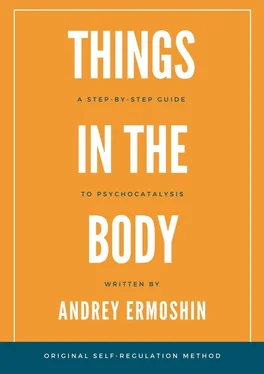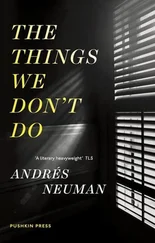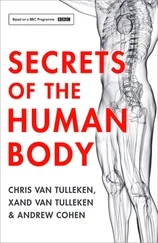1 ...7 8 9 11 12 13 ...20 He sat down and began to describe
Recently, I was impressed by a kind of echo of my old “mute’ practice (mute, because it has a minimum number of questions with maximum confidence in own healing process of the body). This story is about the transformations that a twelve-year-old boy began to experience, as soon as he sat down on a chair and heard the words: “Close your eyes. Describe what you feel.”
The boy had a weakened immunity of unclear genesis. He had been suffering from furuncles for a long time. The last two months he was continuously treated for submandibular lymphadenitis (there was a crack in the corner of his mouth, through which he, apparently, got the infection). Two operations under general anesthesia were unsuccessful. He underwent a lot of bandaging, and there was constantly a tubule for drainage in his wound. Of course, he had to forget about going to school.
The boy was brought to me just after he had been bandaged once again. He sat down on a chair and fell into a special state of connection with attention to inner sensations – a kind of trance. He began to describe his sensations in detail without any instructions from me, except for the most general one: «Watch and describe.» The boy understood the main instruction perfectly, though it didn’t say: «Heal.»
The movement of sensations was very intense. The terrible heat was gathering in his chest and there was the feeling of a huge furuncle.
«Will you let him break through?»
«No.»
The boy felt as if he «put his hands in the oven’, then two dinosaurs were fighting in front of his eyes. Then, after a bright flash, everything disappeared.
First, his head «weighed 300 pounds’, then his legs did. Then «a worm slid on his hip and jumped out,» and «a turtle with a small shell, a long neck, big eyes and a silly smile made him laugh’. At last, being weightless, he began to «flip’ in the air.
«Count how many times.»
«Five.»
He began to «flip’ in the air again. This time he had ten «flips.»
A series of transformations, which lasted for about thirty minutes, ended with the formation of a sensation of even heat throughout his body, and the boy felt the opportunity to open his eyes.
A lump of cottage cheese
I was interested in following the outcome of his healing after that process of spontaneous self-regulation. I asked about the condition of the boy in a month. He was healed. Two months later I met him once more.
He maintained balance in his sensations. He enjoyed playing with his friend. «Everything is good. I can play and jump,» he said. Only a small crimson scar under his jaw reminded about his former problems.
«Scars adorn a man,» I remarked.
«I have got enough of them,» my little patient said proudly
The boy reproduced the dynamics of recovery: steady internal heat remained after our meeting. «We were going to take him to the regional center for a more massive operation, but the need for this somehow disappeared by itself. The wounds began to heal,» his mother added. We communicated with him on February 8 th, and on March 8 thhe was already at school. Later his health was improving steadily. His relatives noticed that in he also became calmer.
At the end of my communication with the boy his aunt expressed a desire to talk with me about her problems. It was an indirect sign of recognition of the connection between the session and the recovery by the boy’s relatives. A large lump of fresh cottage cheese, which I brought to Moscow to my children, seemed to me a great reward for my modest question: «What do you feel?»
When you can let happen transformations like those, described by my little patient, nothing else is necessary.
In a few other cases, the challenge is to make the sensations flow . Such transformations are the essence of therapeutic achievements.
Do not talk
To tell the truth, sometimes I almost fall asleep when the patient tries to describe in detail the story of his suffering, not hurrying to work through it. It happens not only to me. In the “Technique and practice of psychoanalysis” Ralph Grinson especially considers such cases when a psychoanalyst accidentally falls asleep during a psychoanalysis session. He recommends not to blame the patient. I can cope with it even without pinching my own hand, but I do not tend to overestimate the effectiveness of this method of psychotherapeutic session and try to warn the patient about the uselessness of just listing the facts.
To avoid this, at the first mentioning of a significant event for the patients, which left a mark in their soul, I prefer to work through the consequent of their experiences , to verify the expediency of its storage, instead of being limited to a simple listing the imprints of events in their soul. I call it the non-slip principle .
Though it is possible to talk as well
However, I must note that there is no need to impose a rather closed, non-objective language of body sensations, when a person calls for an open conversation on existential topics and the balance of their state is not in doubt. Indications for SPT method are very wide, but not unlimited . It is the way to restore the resource of a person. It is needed in almost 100% of cases, but it is not the only thing that the patient may need. Thus, the psychotherapist is not obliged to use the methods of SPT always and everywhere.
We will continue to talk about situations where the balance of the human condition still raises doubts.
The ending – to the beginning
With the time, the phase of communication between the doctor and the patient, conventionally called the “relaxation phase’, became increasingly valuable. I learned to perceive it as a kind of goal, the culmination of the process of psychotherapy,
I once noticed that I was not at all inclined to talk to a patient. Of course, I mean «conversation of minds.» Taking into consideration the importance of the influence of affective charges on a patient’s thinking, I found out that it made sense to «talk to the boss’ (unconscious), in the words of M. Erickson, and not with subordinates (thoughts of conscious mind).
It was easier to find «the boss’ by the sensations in the patient’s body.
The direct appeal to the sensations from the very beginning of the work marked the opening of a unique opportunity to change the state directly , without talking (in the usual meaning of this word). The old formula «conversation – relaxation – conversation’ was replaced by a new one: «relaxation – conversation – relaxation’ .
The idea, that the analysis of the patient’s circumstances was usually given an exaggerated value, began to strengthen. In fact, not these circumstances are so important , but how the patient «stands’ in them. It is important to help a person to take a different position in relation to the circumstances, to find another their state. The further is the matter of their own life.
The second phase became the first. Conversations began to start with the analysis of a condition, instead of a situation . Somatopsychotherapy is an exceptional care for the patient’s condition.
Separation of the concepts of “patient’s condition’ and “patient’s problem’
Often the conversation with the therapist flows into the area of discussion of the patient’s problems. I think this is a minimally productive approach. But firstly, let us define what there is besides the patient’s problems.
«The patient’s problem’ is what makes the body react. The perceived information about the situation inside or outside the body, deviates from the optimal. So, the persons consider the restoration of its optimality to be their vital task. This is the basis for their concern.
Читать дальше












